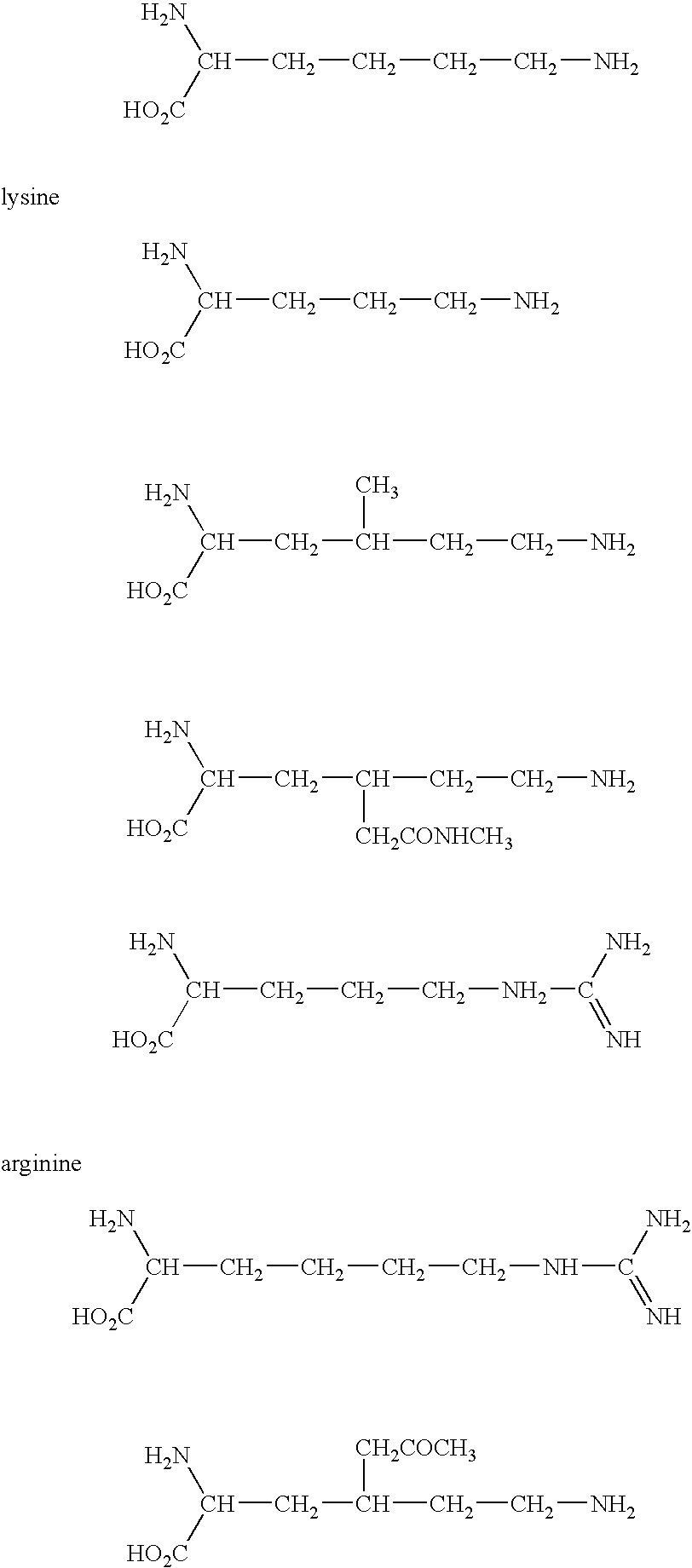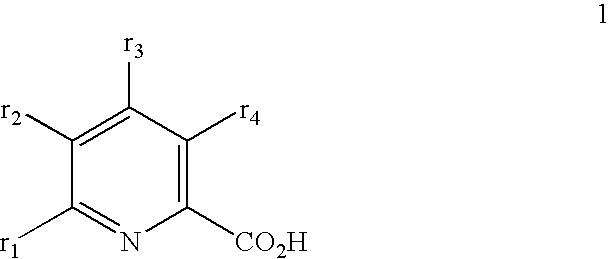Method For The Preferential Polishing Of Silicon Nitride Versus Silicon Oxide
a technology of silicon nitride and polishing method, which is applied in the direction of decorative surface effects, chemistry apparatus and processes, and other chemical processes, can solve the problems of achieving a higher suppressing silicon dioxide removal rate, so as to enhance suppress the and enhance the effect of silicon nitride removal ra
- Summary
- Abstract
- Description
- Claims
- Application Information
AI Technical Summary
Benefits of technology
Problems solved by technology
Method used
Image
Examples
example 1
[0026]Six CMP slurries were separately prepared by dispersing 10% by weight of colloidal silica particles having a mean size of about 50 nm in water. The additives listed in Table 1 below in weight percent were added to the respective CMP slurries (where “Lys” means lysine; “Arg” means arginine; “LysHCl” means lysine mono hydrochloride; and “Pico” means picolinic acid). The pH of the CMP slurries was adjusted as shown in Table 1 below by adding a sufficient amount of potassium hydroxide.
[0027]The CMP slurries were then separately used to polish blanket silicon dioxide and silicon nitride films for one minute using a Westech-372 polisher using a down force as shown in Table 1, a carrier / platen speed of 75 / 75 rpm, a slurry flow rate of 200 ml / min and an IC-1400, k-groove polishing pad. The polishing pad was conditioned for one minute before every polishing experiment. The removal rates of reported in Table 1 are an average of the removal rates of two wafers each of silicon dioxide and...
example 2
[0029]Four CMP slurries were separately prepared by dispersing 10% by weight of colloidal silica particles having a mean size of about 50 nm in water. The additives listed in Table 2 below in weight percent were added to the respective CMP slurries (where “Arg” means arginine; “LysHCl” means lysine mono hydrochloride; and “Pico” means picolinic acid). The pH of the CMP slurries was adjusted as shown in Table 2 below by adding a sufficient amount of potassium hydroxide.
[0030]The CMP slurries were then separately used to polish blanket silicon dioxide and silicon nitride films for one minute using a Westech-372 polisher using a down force as shown in Table 2, a carrier / platen speed of 75 / 75 rpm, a slurry flow rate of 200 ml / min and an IC-1400, k-groove polishing pad. The polishing pad was conditioned for one minute before every polishing experiment. The removal rates of reported in Table 2 are an average of the removal rates of two wafers each of silicon dioxide and silicon nitride.
TA...
PUM
| Property | Measurement | Unit |
|---|---|---|
| Fraction | aaaaa | aaaaa |
| Fraction | aaaaa | aaaaa |
| Percent by mass | aaaaa | aaaaa |
Abstract
Description
Claims
Application Information
 Login to View More
Login to View More - R&D
- Intellectual Property
- Life Sciences
- Materials
- Tech Scout
- Unparalleled Data Quality
- Higher Quality Content
- 60% Fewer Hallucinations
Browse by: Latest US Patents, China's latest patents, Technical Efficacy Thesaurus, Application Domain, Technology Topic, Popular Technical Reports.
© 2025 PatSnap. All rights reserved.Legal|Privacy policy|Modern Slavery Act Transparency Statement|Sitemap|About US| Contact US: help@patsnap.com


